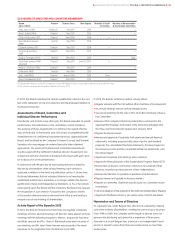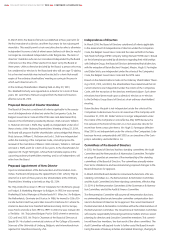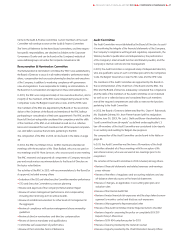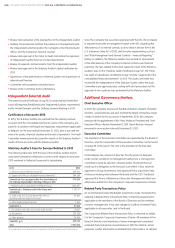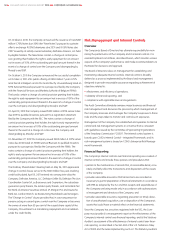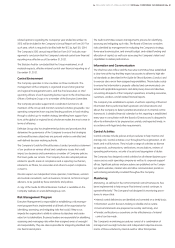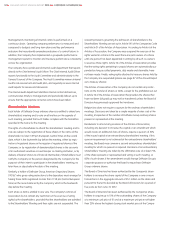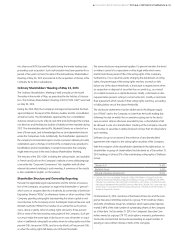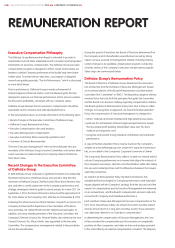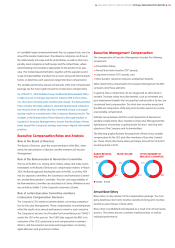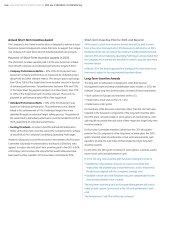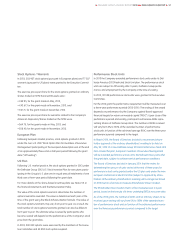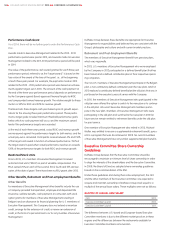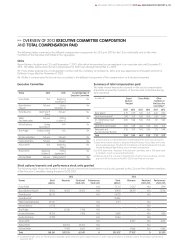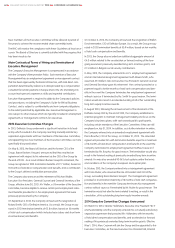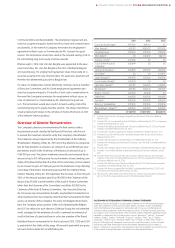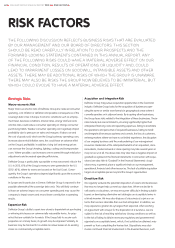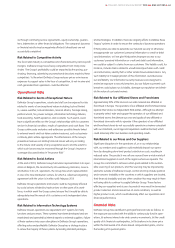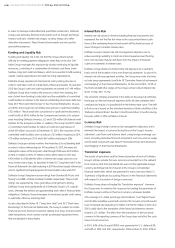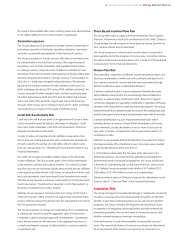Food Lion 2013 Annual Report Download - page 57
Download and view the complete annual report
Please find page 57 of the 2013 Food Lion annual report below. You can navigate through the pages in the report by either clicking on the pages listed below, or by using the keyword search tool below to find specific information within the annual report.
DELHAIZE GROUP ANNUAL REPORT 2013 REMUNERATION REPORT
55
is to establish target compensation levels that, as a general rule, are at or
around the median market level. The reference companies are those in
the retail industry in Europe and the United States, as well as other com-
parably sized companies in both Europe and the United States, where
benchmarking more broadly is appropriate for the position of an exec-
utive. This market-based information, together with the experience and
scope of responsibilities are taken into account, along with internal equity
factors, to determine each executive’s target total direct compensation.
The variable performance-based components of the total compensation
package are the most significant portion of total direct compensation.
As of March 11, 2014 Delhaize Group modified its Remuneration Policy
to take account of changes approved in January 2014 to the Compa-
ny’s short-term and long-term incentive plan design. The Remuneration
Policy includes principles related to unvested equity-based compensa-
tion recovery from an officer who has committed a fraud or wrongdo-
ing that results in a restatement of the Company’s financial results. The
changes in the Remuneration Policy followed a thorough analysis of
its plans for Executive Management to ensure that the design of these
plans support the Company’s strategy and remain aligned with market
practices.
Executive Compensation Roles and Analysis
Role of the Board of Directors
The Board of Directors, upon the recommendation of the RNC, deter-
mines the remuneration of directors and the members of Executive
Management.
Role of the Remuneration & Nomination Committee
The role of the RNC is to, among other matters, advise and make recom-
mendations to the Board of Directors on compensation matters. In March
2014, the Board approved dividing the work of the RNC as of May 2014
into two separate committees, the Governance and Nomination Commit-
tee, and the Remuneration Committee. The roles and responsibilities of
the Remuneration Committee are described in its Terms of Reference and
are set forth as Exhibit C to the Corporate Governance Charter.
Role of certain Executive Committee members
in Executive Compensation Decisions
The Company’s CEO makes recommendations concerning compensa-
tion for Executive Management. These compensation recommendations
reflect the results of an annual performance review for each executive.
The Company’s Executive Vice President for Human Resources (“CHRO”)
assists the CEO in this process. The CHRO also supports the RNC in its
evaluation of the CEO’s performance and compensation recommen-
dations, and the General Counsel provides legal advice concerning
applicable laws and governance matters.
Executive Management Compensation
The compensation of Executive Management includes the following
components:
• Annual Base Salary;
• Annual Short-term Incentive (“STI”) awards;
• Long-term Incentive (“LTI”) awards; and
• Other benefits, retirement and post-employment benefits.
When determining compensation for Executive Management, the RNC
considers all of these elements.
In general, these components can be categorized as either fixed or
variable. The base salary and other benefits, such as retirement and
post-employment benefits that are specified contractually or by law, are
considered fixed compensation. The short-term incentive award and
the different components of the long-term incentive award are consid-
ered variable compensation.
Delhaize Group believes that the current proportion of fixed versus
variable compensation offers members of Executive Management the
right balance of incentives to optimize both the short- and long-term
objectives of the Company and its shareholders.
The following graphs illustrate the proportion of fixed versus variable
compensation for the CEO and other members of Executive Commit-
tee. These charts reflect base salary and target amounts for STI and LTI
awards granted in 2013.
BARON BECKERS-
VIEUJANT
FRANS MULLER OTHER MEMBERS OF
EXECUTIVE COMMITTEE
Variable Fixed
39% 35% 42%
61% 65% 58%
Annual Base Salary
Base salary is a key element of the compensation package. The Com-
pany determines short-term incentive awards and long-term incentive
awards as percentages of base salary.
Base salary is established and adjusted as a result of an annual review
process. This review process considers market practices as well as
individual performance.


